Now Presenting, The Nominees For The Next Space Telescope
9:20 minutes
The American Astronomical Society (AAS) meeting is the largest annual gathering of astronomers and astrophysicists. It’s not known for drama. But this year, the buzz in the room wasn’t too different from the nervous energy during an awards night. That’s because there is a competition underway for what will be NASA’s next big space telescope—the next Hubble or James Webb. There are four nominees, and eventually there will be a winner. Science Friday assistant producer Katie Feather reported on the event from the not-quite red carpet. Learn more about the nominees below!
NASA Jet Propulsion Lab
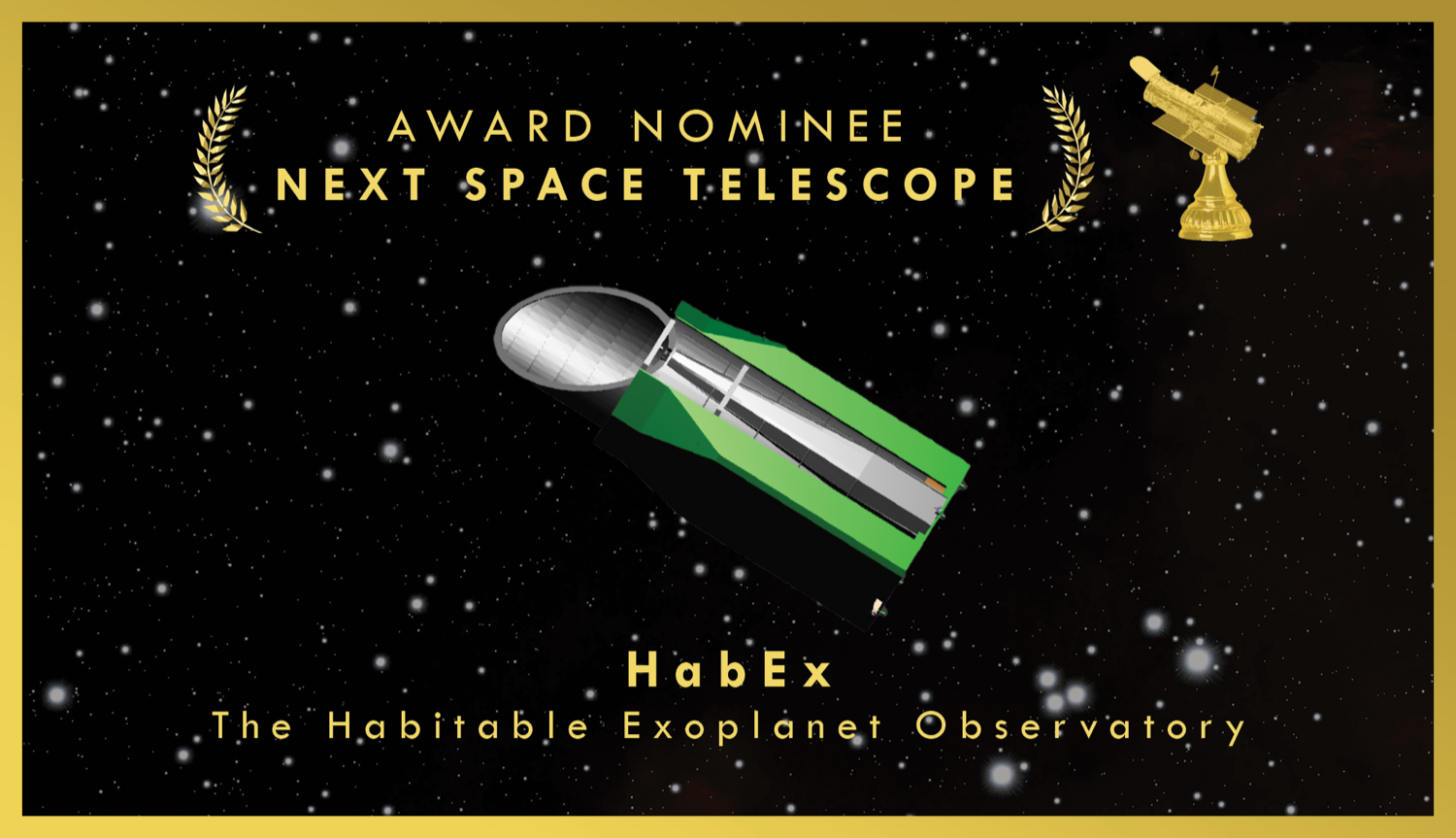
What is it?
HabEx, short for the Habitable Exoplanet Observatory, would be a four-meter long, stable telescope operating in ultraviolet, optical, and very near-infrared photons—think Hubble, but over 10 times larger in area. One of HabEx’s proposed instruments, the starshade, would be deployed from the telescope, physically blocking the light from a sun-like star to bring any orbiting exoplanets into view.

What would it observe?
The primary mission for the observatory is to find and directly image habitable, Earth-like exoplanets. Its instruments would be looking for conditions that could support life, such as signs of liquid water, oxygen, ozone, and other biosignatures. It is one of two candidates for the 2020 Astrophysics Decadal Survey designed to search for Earth-like exoplanets.
What does the team have to say?
“It really is trying to answer this age-old question that’s been around for centuries if not millennia,” says Scott Gaudi, community chair for HabEx. “The idea that now within our lifetime we might be able to do this—think how life changing that would be. Think of how society changing that would be, how humanity changing that would be, knowing that life originated on another planet other than our own… I think as human beings we’re searching for meaning and if we knew that life originated somewhere else, somehow that would give us a little bit more meaning.”

NASA Marshall Space Flight Center
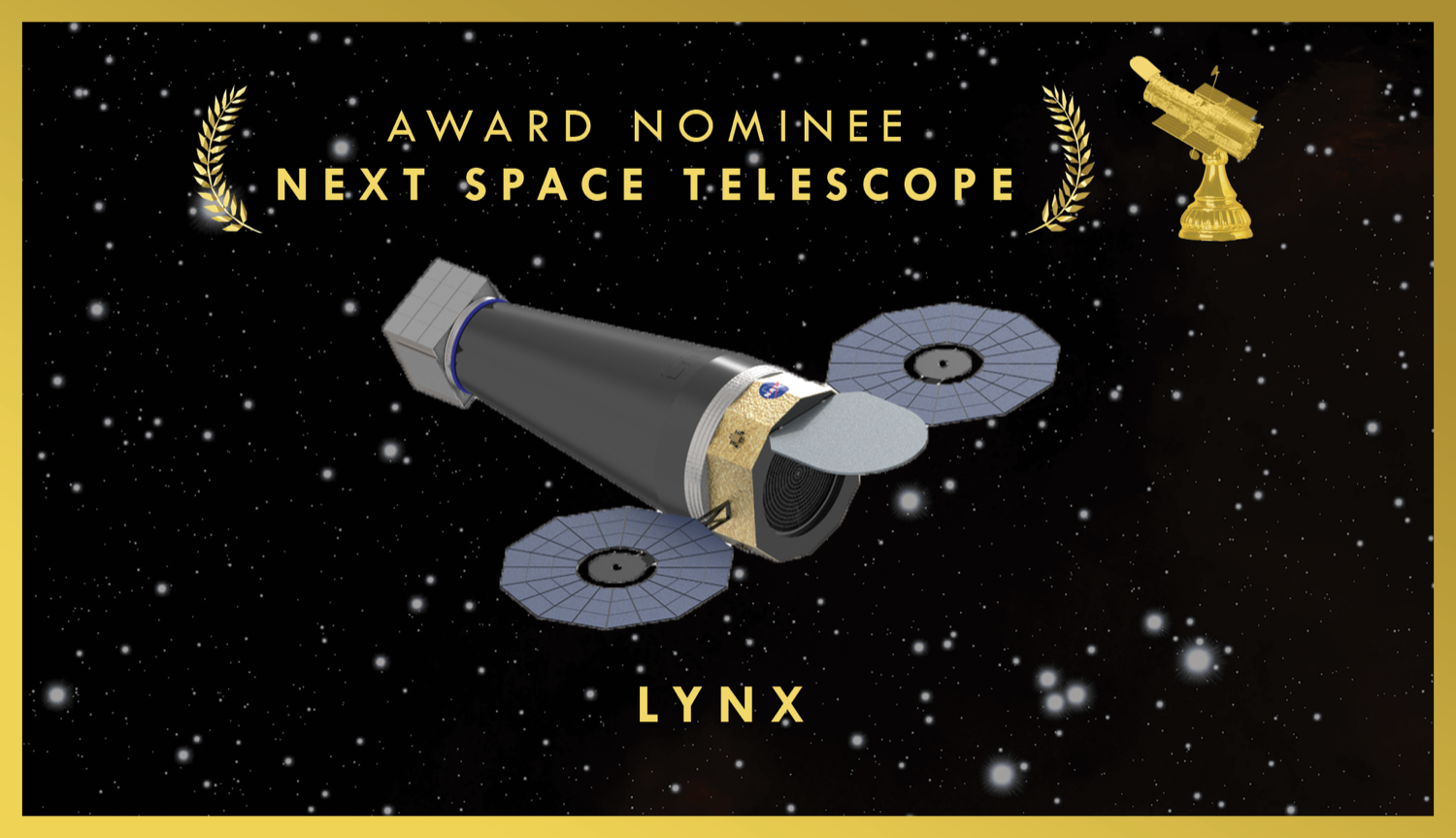
What is it?
Named after a sharp-eyed feline, Lynx would be an X-ray telescope similar to the currently active Chandra X-ray Observatory, which detects heat from exploded stars, galaxy clusters, and matter surrounding black holes.

What would it observe?
The next-generation, large-area telescope would observe and better understand the origins of black holes, the drivers of galaxy formation, and the evolution of stars. It’s high angular resolution and X-ray abilities would visualize matter and high-energy emissions in the universe that would be otherwise invisible.
What does the team have to say?
“It would be by far the most powerful X-ray observatory ever flown by orders of magnitude, across multiple dimensions,” says Grant Tremblay, a team member of the Lynx study. “It would do science from the poles of Jupiter to black holes at the edge of time and everything in between.”
NASA Goddard Space Flight Center
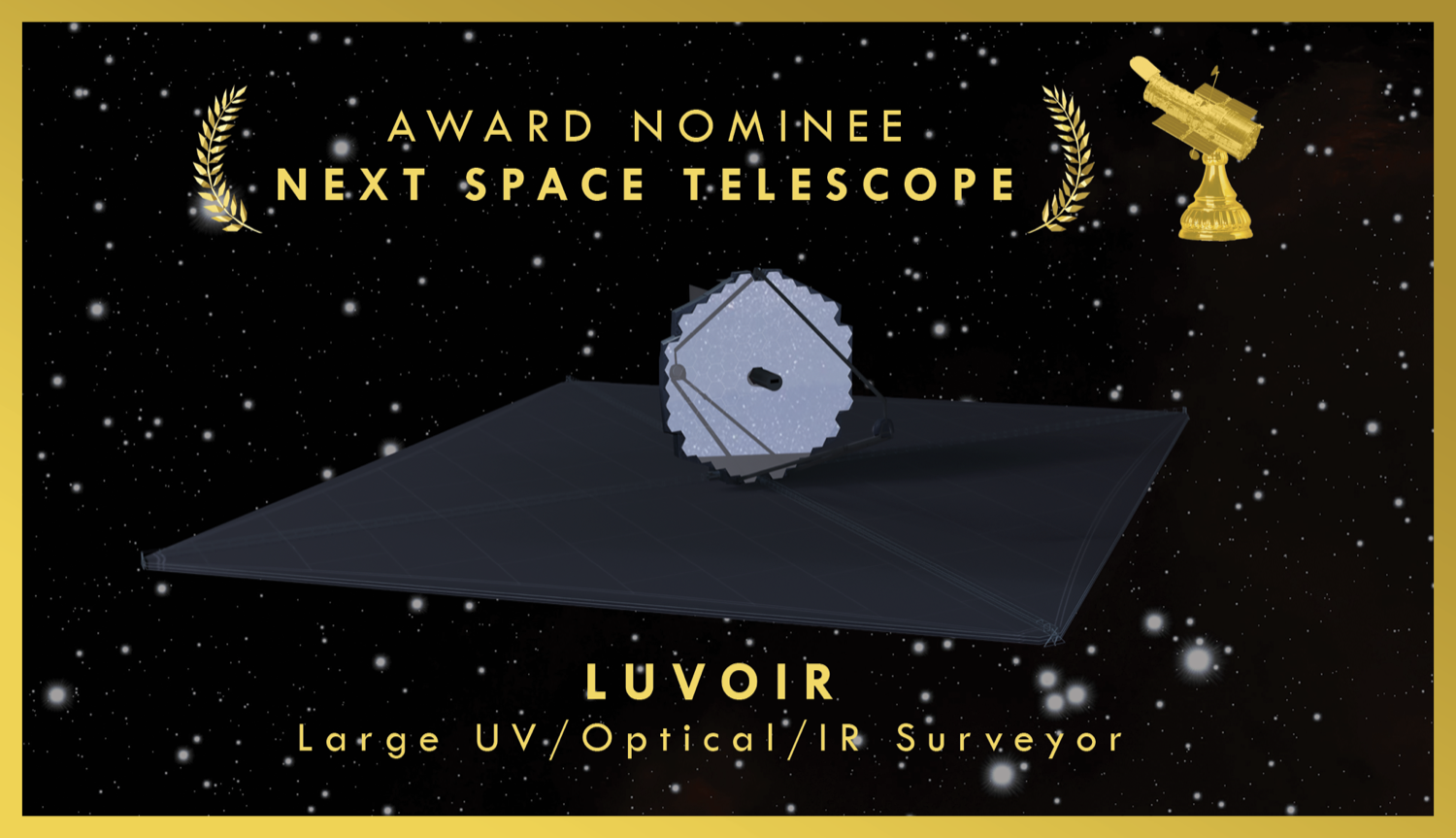
What is it?
LUVOIR would be a “super, duper, duper Hubble,” according to study lead Aki Roberge who spoke to SciFri in a previous segment. Hubble’s primary mirror is 2.4 meters in diameter, but the LUVOIR team is currently assessing two different designs: an eight-meter diameter primary mirror and a 15-meter diameter mirror. The larger the mirror, the more sensitive and detailed the telescope.
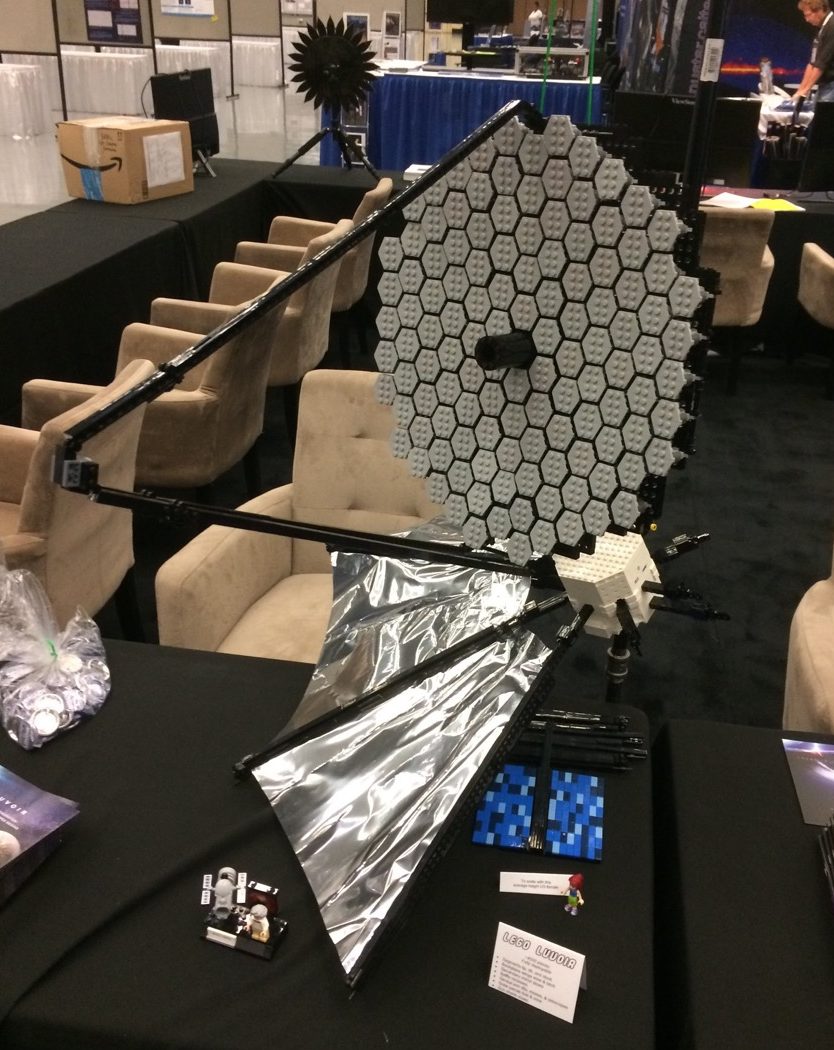
What would it observe?
LUVOIR would aim to answer questions like how galaxies assemble, how stars form, and if life can be found beyond our planet. Like HabEx, one of LUVOIR’s main scientific goals would be to study rocky, Earth-size exoplanets found orbiting the habitable zones around Sun-like stars. The powerful telescope would be able to directly image these exoplanets and characterize them—identifying whether they have water, oxygen, carbon dioxide, or other signs of life. If either LUVOIR or Habex are chosen in the decadal survey, it will be the first time researchers will ever directly observe an Earth-like exoplanet.
What does the team have to say?
When the Hubble Space Telescope imaged the Hubble Ultra Deep Field, it took more than a week long and over 100 hours of exposure, explains John O’Meara, the cosmic origins science lead for LUVOIR. “That image will be done in 47 minutes with LUVOIR. And so we can truly take it to the next level, find the furthest and farthest things out there in the universe, and see how galaxies really are forming—little Lego blocks of galaxies stitching together to form galaxies that then become galaxies like our own Milky Way.”
If LUVOIR had a theme song what would it be?
“The 1812 Overture,” says O’Meara.
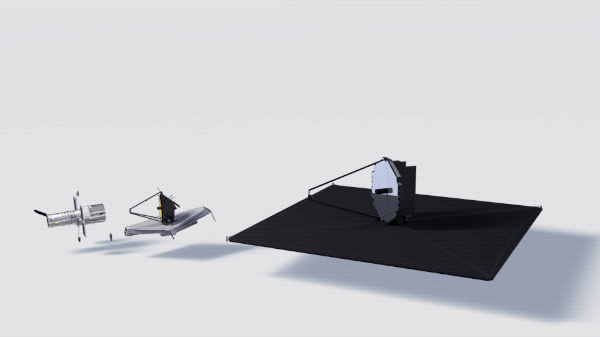
NASA’s Goddard Space Flight Center
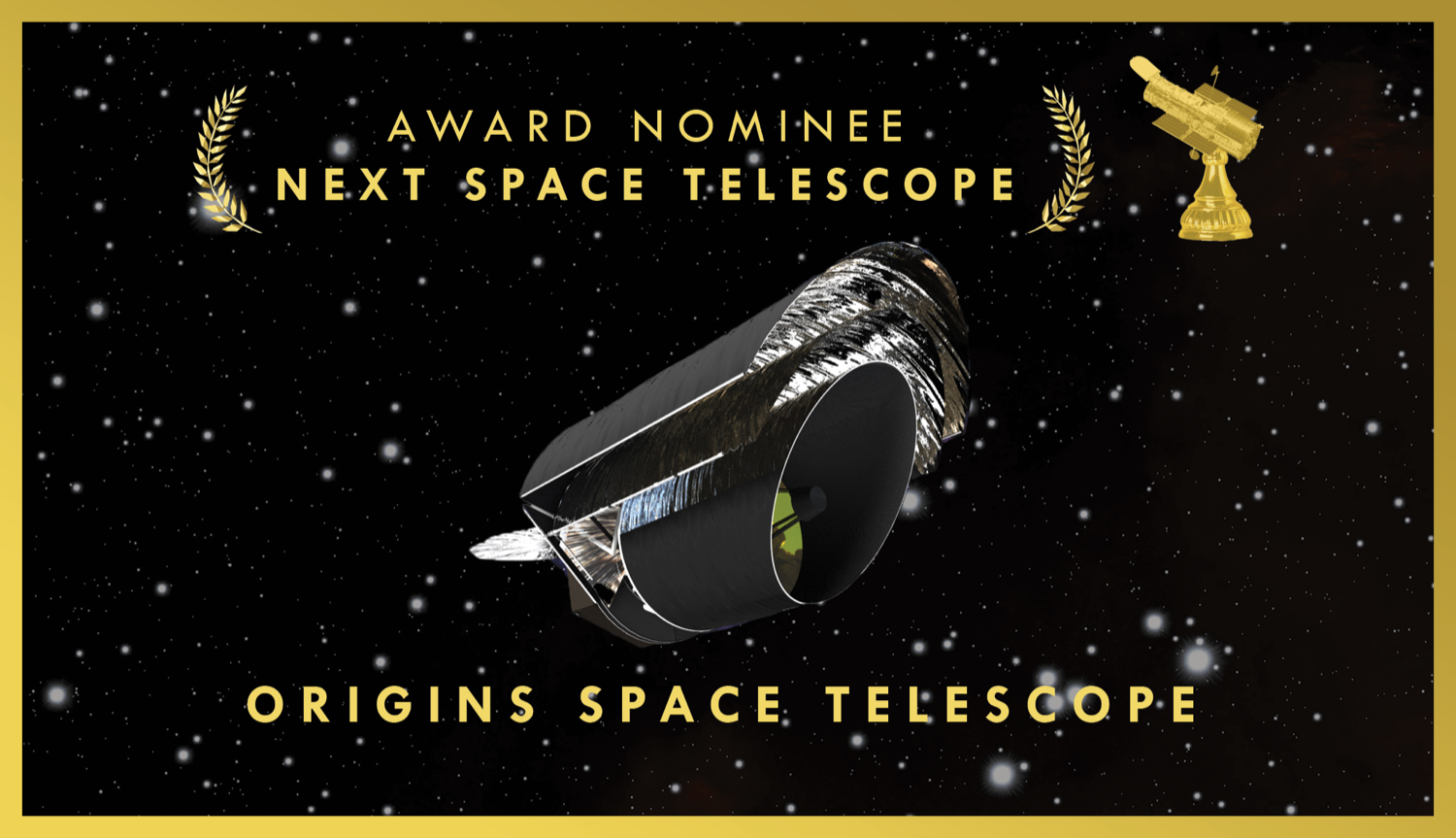
What is it?
The Origins Space Telescope (OST) would be an infrared telescope. With an improved 5.9-meter diameter mirror, Origins would be two to four order of magnitude more sensitive than the European Space Agency’s former Herschel Observatory—allowing it to map out the universe one billion times as fast.
What would it observe?
Origins would search for the origins of galaxies and planets. It would also look for exoplanets spinning around cooler dwarf stars, and visualize deep reaches of the universe that are too cold and faint to detect with other parts of the electromagnetic spectrum. The infrared telescope will also help collect information about how water is transported and formed in young planets, to try to better understand how planets like Earth form.
What does the team have to say?
“Just imagine that. One billion,” says, Johannes Staguhn, principal scientist at Johns Hopkins University and on the Origins Space Telescope team. In about two snaps of your fingers, “Origins has obtained that much mapping capability on the sky as Herschel has done during the entire mission, which was a few years. And that is how big a billion is.”
Correction 2/22/19: A previous version of this page cited measurements from an older concept of the Origins Space Telescope. The most recent proposal as of 2/22/19 features a 5.9-meter diameter mirror, not 9.1 meters. We regret the error.
Invest in quality science journalism by making a donation to Science Friday.
Katie Feather is a former SciFri producer and the proud mother of two cats, Charleigh and Sadie.
IRA FLATOW: This is Science Friday. I’m Ira Flatow. It’s award season, and not just for Hollywood. The American Astronomical Society Meeting is the largest annual gathering of astronomers and astrophysicists. It is not known for drama, but this year, you could feel the nervous energy of awards night, because there was a competition underway, a competition for what will be NASA’s next big space telescope, like the Hubble or the James Webb. There are four nominees, and eventually, there will be a winner. Our producer, Katie Feather, takes us to the red carpet.
KATIE FEATHER: At first glance, the exhibit hall of the American Astronomical Society Meeting is about as far from Hollywood as you could possibly get. Still, I flagged down university of Chicago sophomore Katya Guzman, decked out in conference swag, to ask her that most important red carpet question, who are you wearing?
KATYA GUZMAN: The necklace is the constellation Lyra. Pins, this one is, I need my space, and then this one is from the [? chandra ?] booth.
KATIE FEATHER: So do you have any thoughts about the four space telescopes, which one you’re like a fan of or anything like that?
KATYA GUZMAN: Oh, that’s a good question. They’re all super cool. We spent a lot of time talking to the Lynx telescope guy.
KATIE FEATHER: The Lynx telescope is one of the four nominees being considered in what’s known as the Decadal Survey, a chance for the entire field of astronomy and astrophysics to weigh in on its scientific goals. The survey determines which telescope will receive billions of dollars of future NASA funding and shapes the field of astronomy for decades to come. This meeting is the last opportunity these four nominees have to get the word out about their projects, the last chance to get the Academy– I mean, the community on their side.
So without further ado–
[MUSIC – RICHARD A. WHITING, “HOORAY FOR HOLLYWOOD”]
The nominees for best space telescope are Habex, Origin Space Telescope, LUVOIR, and the Lynx X-ray Observatory.
Let’s get started. Here’s Grant Tremblay, a.k.a. the Lynx telescope guy, and his pitch, for your consideration.
GRANT TREMBLAY: We’re really, really excited about our design for the Lynx X-ray Observatory. It would be by far the most powerful X-ray Observatory ever flown by orders of magnitude across multiple dimensions, and it would do science from the poles of Jupiter to black holes at the edge of time and everything in between.
KATIE FEATHER: Grant shows me samples of the angled mirrors that will allow Lynx to listen to the sound waves being emitted by the black hole at the center of our galaxy. Lynx isn’t the most innovative telescope among the nominees, more like a new take on an old classic, in league with movies like A Star is Born. But is that enough to win best telescope?
GRANT TREMBLAY: Look, look, all of these missions would do absolutely fabulous science and we’re all going to be rooting for whatever mission gets selected, and that is the absolute truth.
KATIE FEATHER: I think of it sort of like the Oscars, like everyone’s been nominated and they’re all very, like happy–
GRANT TREMBLAY: We’re all very happy to be here, yeah.
KATIE FEATHER: Also, they just did great work.
GRANT TREMBLAY: Right. But you’re secretly pissed when you didn’t win?
[CHUCKLING]
KATIE FEATHER: A ways down the dingy blue carpet from team Lynx is our second nominee, the Origins Space Telescope. With some very impressive special effects, a full virtual reality experience.
Can I try it out?
SPEAKER 1: I would love it if you try out for virtual reality experience.
[OPENING VELCRO]
And I’m going to pull your strap over the top.
KATIE FEATHER: Right now, I’m in a big galaxy. It’s like a blue– it’s– there’s pink and light blue swirls of stars. Whoa.
Like its predecessor, the Herschel Observatory, Origins is an infrared space telescope. It will observe the parts of the universe that are too cold and too faint to see with visible light, but it will do it 1 billion times as fast as Herschel ever could. Snap your fingers twice–
[SNAPPING FINGERS]
–and in that time, Origins will have already surveyed more sky than Herschel did in its entire year’s long mission. As cool as that sounds, maybe the Decadal committee won’t have an appetite for a next generation infrared telescope the same way the Academy might snub a historical comedy like The Favorite.
JOHANNES STAGUHN: Which one do you select, right? What is the right criteria?
And then what is comedy, right? Some people prefer slapstick. Some other people like irony. Some people like, you know, the different styles.
KATIE FEATHER: Johannes Staguhn is principal scientist at Johns Hopkins University and the Goddard Space Flight Center. He’s team Origins.
JOHANNES STAGUHN: But the beauty of science, of course, then is we also have an objective regimes of things, where opinions are irrelevant. Scientific results have nothing to do with opinions. But if you have to decide between, you know, one mission or the other, that’s where the subjective component comes in.
KATIE FEATHER: Elsewhere on the blue carpet, I make the mistake of bringing up Origins’ flashy VR demo with John O’Meara, a member of the 3rd team backing the LUVOIR telescope.
JOHN O’MEARA: You can’t beat the LEGO thing!
KATIE FEATHER: He points emphatically to a two foot high tabletop model of his telescope LUVOIR. And yes, it’s made of LEGOs. LUVOIR is on track to be the most expensive of all four telescope projects, but most people agree it’s also the most ambitious.
JOHN O’MEARA: LUVOIR is a very large space telescope. The L in LUVOIR is for large.
KATIE FEATHER: LUVOIR stands for Large Ultraviolet Optical Infrared Surveyor. It’s Hollywood’s big budget crowd pleaser, like Black Panther, and just as popular. Its biggest mission will be the search for Earth-like planets outside our solar system, as many as it would take to provide a definitive answer to whether we are alone in the universe.
OK. Now I’m going to ask you maybe the most challenging question that you’ve probably been asked about LUVOIR.
JOHN O’MEARA: OK.
KATIE FEATHER: Are you ready for it?
JOHN O’MEARA: Sure.
KATIE FEATHER: If LUVOIR had a theme song, what would it be?
JOHN O’MEARA: The 1812 Overture.
KATIE FEATHER: (LAUGHING) Why is that?
JOHN O’MEARA: Because there’s this great big buildup and there’s this theme that keeps running with it, you know, and it gets louder and louder and weaves in and out of the music. And then at the end, there’s this giant crescendo and the–
[MIMICKING 1812 OVERTURE]
–and that’s the moment when all this great science suddenly starts hitting. We just– you discover pale blue dots out in the universe.
[MIMICKING EXPLOSION]
You’re seeing the furthest galaxies ever. We’re seeing stars being born and die. Yeah, it’s just all the big hits come in when you turn that thing on.
So you’re waiting for it. You’re anticipating what’s coming, and it’s teasing you as the data’s coming in. And then when you look at the data in its full form and you see that you’ve answered a truly amazing question, that’s when the fireworks go off.
[MUSIC – PYOTR ILYICH TCHAIKOVSKY, “1812 OVERTURE”]
KATIE FEATHER: So why doesn’t NASA just go all in for LUVOIR? Four words.
SPEAKER 2: James Webb Space Telescope.
SPEAKER 3: The James Webb Space Telescope.
SPEAKER 4: James Webb.
SPEAKER 5: James Webb.
SPEAKER 6: James Webb.
SPEAKER 7: James Webb.
SPEAKER 8: The James Webb Space Telescope.
KATIE FEATHER: The James Webb Space Telescope was the top ranking choice in the 2000 Decadal Survey. And 19 years later, it still hasn’t launched, which is why, for this Decadal, the teams are being extra careful, even coming up with a backup plan.
SCOTT GAUDI: We’re looking at the kind of costs constrained. How can we do this in the simplest, least risky, least expensive way and still be able to achieve this goal?
KATIE FEATHER: Scott Gaudi is community chair for the fourth nominee, the Habitable Exoplanet Observatory, or Habex. Habex is sort of an underdog, Netflix’s Roma to the rest of Hollywood’s blockbusters.
Like LUVOIR, it will also look for Earth-like planets outside our solar system, just not enough to be certain that life doesn’t exist elsewhere in the universe. Its main selling point is its cheap price tag, but both will give us a shot at directly observing, as in taking a snapshot of, an Earth-like exoplanet. It would be a game changer.
SCOTT GAUDI: Even if the Decadal Survey doesn’t choose one of these missions, eventually, a Decadal Survey will do this. This is the future of exoplanets. We do want to answer this question, are we alone in the universe, is there life on other planets, and this is one of the only ways of doing it.
KATIE FEATHER: There will be another Decadal Survey in 2030. By then, Hubble will be on the edge of retirement, the James Webb Space Telescope will have taken its place, and whichever telescope is selected this time around won’t even exist yet. It will be more than a decade before Lynx, Origins, LUVOIR, or Habex can show us the science they’ve promised. Because remember, this contest isn’t for best picture, it’s just to get the money to make the movie.
[MUSIC – RICHARD A. WHITING, “HOORAY FOR HOLLYWOOD”]
For Science Friday, I’m Katie Feather.
[MUSIC PLAYING]
IRA FLATOW: And you can learn more about the nominees and see them looking glamorous on the red carpet by going to sciencefriday.com/spaceawards.
Copyright © 2019 Science Friday Initiative. All rights reserved. Science Friday transcripts are produced on a tight deadline by 3Play Media. Fidelity to the original aired/published audio or video file might vary, and text might be updated or amended in the future. For the authoritative record of Science Friday’s programming, please visit the original aired/published recording. For terms of use and more information, visit our policies pages at http://www.sciencefriday.com/about/policies/
Katie Feather is a former SciFri producer and the proud mother of two cats, Charleigh and Sadie.
Lauren J. Young was Science Friday’s digital producer. When she’s not shelving books as a library assistant, she’s adding to her impressive Pez dispenser collection.
Ira Flatow is the founder and host of Science Friday. His green thumb has revived many an office plant at death’s door.